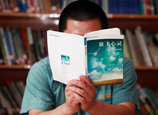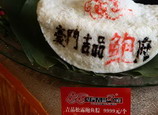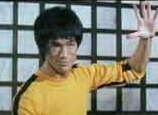
Ancient Buddhist temples can be found almost everywhere in Shaanxi, most of which are very famous and quite a few are imperial temples. The temples in the province number over 400, all with high historic and cultural value. Chang’an had been a center for promoting and developing Buddhism for over 1,000 years. Once stepping into these temples, you would find yourself in a high-level art exhibition hall presenting a huge and rich Buddhist volume showing the temples’ ups and downs and depicting the countless charity works they have done.
Jianfu Temple and Xiaoyan Pagoda
Situated outside the South Gate of downtown Xi’an, the temple was first built in the 1st year during Wenming reign of the Tang Dynasty in 684, and the well-preserved pagoda was first set up during the Jinglong reign of the Tang Dynasty in 707. The pagoda elegantly structured is acknowledged to be an exquisite artifact of Tang Buddhist architectural relics. Xiaoyan Pagoda along with Dayan Pagoda south of downtown Xi’an, are two well-known landmarks handed down from the Tang Dynasty. The famous “Morning Bell at the Pagoda” actually refers to the Xiaoyan Pagoda which became one of the “Eight Scenes of Guanzhong Area.”
Qinglong Temple
Qinglong Temple is located on the tableland north of Tielumiao Village south of Xi’an. The temple, which underwent rises and declines since its establishment in A.D. 582 in the Sui Dynasty, has now enjoyed great reputation throughout the world. Mi Sect master of the Tang Dynasty Huiguo once lived in the temple for a long time. The temple has been witnessing the friendly connections between China and Japan. The famous Japanese monk Kukai once studied Buddhism in the temple in the Tang Dynasty, and later went back to Japan to spread Buddhist doctrines and founded the Zhenyan Sect (the True Word Sect). Today, inside the temple stands a monument in memory of Kukai. The two countries have a garden built within the temple where they also planted Japanese cherry trees. Up till now, a great number of travelers from home and abroad have been attracted to the temple for its beautiful and quiet scenery and out of their admiration for its legendary role in Buddhist history.
Xiaoyan Pagoda
Qinglong Temple
Guangren Temple
Situated in the northwest corner of downtown Xi’an, Guangren Temple, also called “Lamasery”, is the only Tibetan Lamasery in Shaanxi and the only Buddhist site for Green Tara in China. It was the temporary dwelling for Grand Lamas from the northwest and Sichuan-Tibet areas on their way to Beijing. Despite its short history of 200 years, the temple has been playing a major role in promoting Han-Tibetan cultural exchanges to achieve peace and unity among ethnic groups in the western border areas of China. The grand halls with lush trees and green plants made the temple a solemn secluded shelter in the busy downtown area. A lantern festival is held on every 24-25 in the tenth lunar calendar to commemorate the day when Songkapa achieved Buddhist enlightenment. During this time endless streams of pilgrims would gather at the Guangren Temple to worship by burning incenses and chanting Buddhist scriptures, which is quite an interesting event in the temple.
Wolong Temple
Situated in Baishulin Street of Xi’an, the temple was first built by Emperor Lingdi (168-189) in the Eastern Han Dynasty about 1,800 years ago according to the records on a stone tablet. The temple now houses abundant cultural relics including steles dated back to the Yuan, Ming and Qing dynasties. Besides the five thousand Buddhist classics (now preserved in Shaanxi Provincial Library), the temple houses the precious pattra-leaf scriptures from ancient India, an iron bell from the Song Dynasty, and a gift marble incense burner from a Tibetan lama. They all have extremely high historic and cultural values.
Zhixiang Temple
Located in Tianzi Valley of Zhongnan Mountain, Zhixiang Temple, one of the birthplaces of Huayan Buddhism, was the place where the second master Zhiyan promoted Huayan Sutra. The temple was built atop of a peak and has a fairly open view overlooking the distant mountains to the east. The Inside of the temple affords a refreshing and peaceful scene of lush greenery and fragrant blossoms along with Buddhist chanting blowing in the air. Legend has it that Emperor Li Shimin of the Tang Dynasty visited the temple many times to pay homage to the Buddha, and planted in person some ancient Chinese scholar trees and gingko trees which are still flourishing today. In the backyard of the temple grows a 1,500-year-old gingko tree, which is so huge and tall that it takes three or four people to put their arms around it.
Guangren Temple
Wolong Temple
Zhixiang Temple
Yuhua Palace Temple
Located in the Yuhua town northwest of Tongchuan City, Yuhua Palace Temple was the birthplace of Faxiang Buddhism and a holy land for Buddhists around the world. First built in A.D. 624 in the Tang Dynasty, the temple was believed to be the best among the four summer palaces for the emperors of the Tang Dynasty. It was also the place where Emperor Taizong handled the state affairs in his late years. It was in this temple that Monk Xuanzang achieved his nirvana. As the fame of the temple grows, more and more Faxing Buddhists from Japan came to pay homage at the temple in recent years.
Mount Xiangshan in Tongchuan
Situated in Liulinyao Village 45 kilometers north of Yaoxian County of Tongchuan City, Mount Xiangshan is formed by three rocky mountain peaks, hence its name “Three-Peak Mountain.” It was famous throughout the world as one of the eight holy Buddhist sites in China because Princess Miaoshan, also known as the Goddess of Mercy, achieved her final goal to become a Buddha in this mountain. The present mountain is covered by flourishing greenery and trees with many huge temples, simple and imposing in style. Two temple fairs are held ten days before or after the 15th of every third and tenth month on lunar calendar, attracting over tens and thousands of pilgrims from around the world. When flowers blossom over the mountain in April, hundreds of thousands of butterflies would be seen flying over the mountain which is indeed a spectacular scene.
Zhiguo Temple
Located in Xiecun Tow 12 kilometers west of Yangxian County in Hanzhong City, Zhiguo temple has been historically honored as “the Most Celebrated Temple in Hanzhong,” where stand rows of halls and a forest of pagodas shaded by ancient cypress trees reaching towards the sky. Designated as Shaanxi’s only imperial-palace-style temple in 1992, the temple is quiet and secluded—an ideal site to chant Buddhist scriptures. The Scripture Chamber, built in the Ming Dynasty, houses a collection of 4,187 volumes of Tripitaka (the great Buddhist canon) presented by a Ming emperor, among which many were Sanskrit classics translated by famous monks from the Eastern Han to the Tang Dynasties. Boasting such a huge collection of Buddhist scriptures, the temple stands out of other Buddhist temples and has been protected as one of the key cultural sites by the provincial government.
Xingjiao Temple
Located about 20 kilometers to the south of Xi’an city wall Xingjiao Temple was acclaimed on the top list of the eight major temples in Fanchuan and the burial ground for Master Xuanzang in the Tang Dynasty. The temple proper is facing to the south and surrounded by old scholar trees and many other types of lush greenery. With the Zhongnan Mountain in the far distance and beautiful sceneries around, voices of scripture chanting drifting in the air made the temple a even more solemn and secluded place for Buddhist to pay a homage visit of the temple where Master Xuanzang is buried. The temple boasts 12 Buddhist mural paintings and bronze Buddha statues of the Ming Dynasty, a Burmese jade Buddha statue, as well as over thousands of volumes of Buddhist canons. Among them the pattra-leaf scriptures acquired by Xuanzang from India is the most precious.
Xianyou Temple
Xianyou Temple is located in Zhouzhi County west of Xi’an. The temple has collected numerous valuable historical and cultural relics since its founding in the Sui Dynasty. Among them, the ten holy sarira retrieved from the Sui Dynasty glazed bottle in the gilded bronze coffin under Fawang Pagoda were the most valuable.
















 Bodyguard trainees experience 'Hell Week' in Beijing
Bodyguard trainees experience 'Hell Week' in Beijing


![]()
